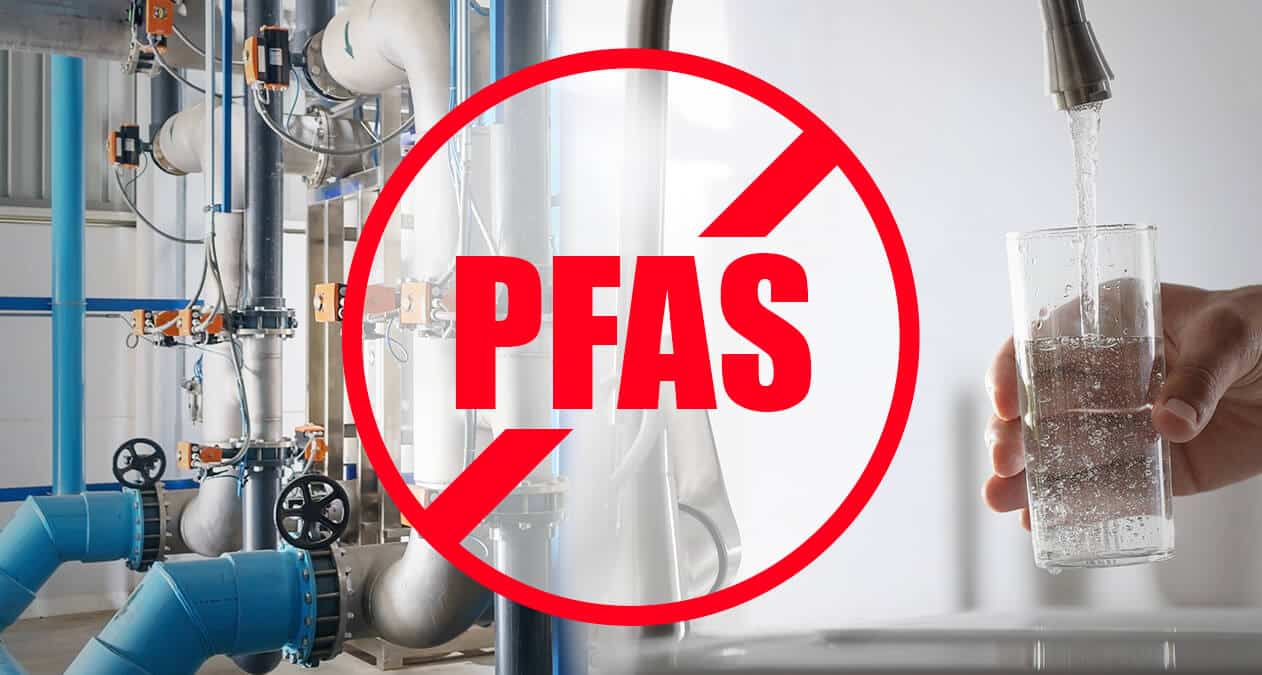
New regulations to control Per- and Polyfluoroalkyl Substances (PFAS) pollution are imminent.
The regulations for these “forever chemicals” will inevitably affect the industries that are sources of PFAS contamination as the U.S. Environmental Protection Agency (EPA) seeks to hold polluters accountable.
Here’s what you need to know to get ready for this next chapter in safe water policies.
Q: What’s the status of PFAS regulations?
A: The EPA continues to introduce measures designed to control the impact PFAS have on public health.
National drinking water standards for certain PFAS are expected to be finalized in January 2024. Updated PFAS hazardous substances designations under the Comprehensive Environmental Response, Compensation, and Liability Act (CERCLA) are expected to be finalized in March 2024.
The agency also indicated it will issue guidance on destroying and disposing of PFAS, finalizing methods to monitor for PFAS in a wide range of media. Proposing rules that will designate certain PFAS as hazardous constituents under the Resource Conservation and Recovery Act is also on the agency’s radar.
According to the EPA’s 2023 report that tracks the agency’s progress to control PFAS pollution,
EPA has added PFAS as an EPA enforcement and compliance priority from 2024-2027.
“EPA has taken several steps to use permitting and regulatory authority of the Clean Water Act to reduce PFAS pollution in our nation’s waters – including specific regulations to limit PFAS discharges from PFAS manufacturers, metal finishers, and landfills,” the EPA said in announcement about the 2023 progress report.
In addition, several states have established regulatory limits for drinking water and groundwater or are sampling to assess their state’s PFAS contamination. The Interstate Technology and Regulatory Council (ITRC), a state-led coalition working to reduce compliance costs and maximize cleanup efficacy, provides a list of state and EPA water and soil values for PFAS in groundwater, drinking water, and surface water/effluent (wastewater). ITRC notes that the values are changing rapidly as PFAS information continues to emerge.
Q: What are POTWs doing to remove PFAS?
A: Unfortunately, traditional POTW wastewater treatment systems do not remove PFAS. However, some municipalities are investing in Granular Activated Carbon (GAC) filtration systems to capture PFAS.
With regard to local pollutant discharge limits, it is worth noting that EPA has already established a precedent in its national pretreatment standards designed to protect POTW operations — and their investments. The regulations direct POTWs to establish local limits to protect them “from receiving wastes that pass through or interfere with their operations (including sludge management).”
Q: What industries are most likely to be impacted by the PFAS regulations?
A: PFAS are widely used in U.S. manufacturing, transportation, and utility infrastructure. Impacted sectors include, but are not limited to, the following:
Q: What can manufacturers do to reduce how much PFAS their company may be liable for?
A: On Dec. 27, 2023, the EPA announced that penalties will increase roughly 3.2% to adjust for inflation. Since January 2023, EPA penalties have increased almost 11% in total. The financial consequences of a compliance lapse are not trivial.
The good news? Systems that treat industrial process and wastewater on-site have been shown to treat and remove certain types of PFAS. For example, a North American landfill installed a vacuum evaporator to treat reverse osmosis reject. The system reduced the PFAS and perfluorooctane sulfonic acid (PFOS) to levels that make the reverse osmosis waste suitable for discharging to sewer.
Q: What other benefits do on-site treatment systems for industrial process and wastewater provide manufacturers outside of meeting environmental compliance requirements?
A: On-site water treatment equipment such as vacuum evaporation and distillation systems provide the following operational benefits:
To learn more about utilizing vacuum evaporation and distillation to reduce PFAS, please visit PRAB.com or contact us.